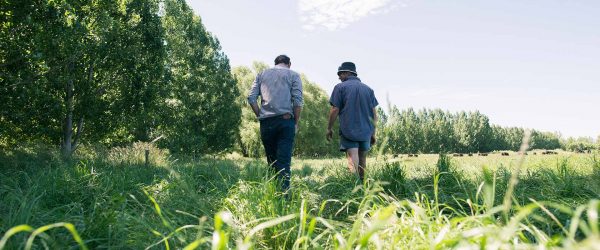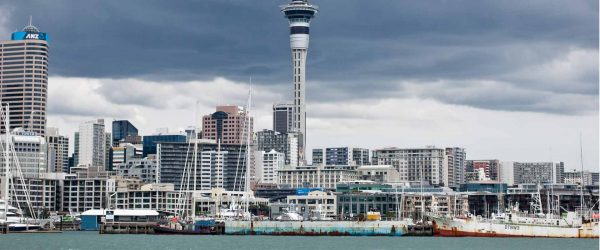Project Summary
Recent wildfire events throughout Aotearoa New Zealand have highlighted our vulnerability to these damaging events (e.g. 2011 Karikari Peninsula and 2017 Port Hills fires). The project team worked with communities to co-develop wildfire resilience initiatives that integrate rural wildfire hazard risk assessment and resilience initiatives within a multi-risk environment.
In Northland, the team worked with rural communities on wildfire preparedness, risk awareness and developing better understandings of iwi and hapū perspectives and practices for fire management. The project also focused on the role of community volunteers in fire risk emergency management and response, with the aim of understanding the role of volunteers across the ‘4Rs’ (reduction, readiness, response, recovery). Researchers learned that, on the Karikari Peninsula, whānau and marae helped to inform and support residents during and after the 2011 wildfire, and that experiencing wildfire encouraged the majority of residents to become better prepared.
The research produced useful recommendations for improving preparedness for wildfires and encouraging safe fire use in rural communities across Aotearoa New Zealand. The success of this study led to Scion social and kairangahau Māori researchers conducting a study with a hapū in the Hokianga, to explore what a resilient hapū would look like and to contribute towards planning with Māori communities to reduce natural hazard risk. Meanwhile, the Karikari study also helped shape other Scion-led social fire research, on targeted protection against extreme fire.
This combined research has helped inform Fire & Emergency New Zealand’s Māori engagement policy and contributed to their work with tangata whenua to build the resilience of Māori communities.
Resources from this project
Increasing the Value of Weather-Related Warnings
Zhang Q, Li L, Ebert B, Golding B, Johnston D, Mills B, Panchuk S, Potter S, Riemer M, Sun J, et al. 2019. Increasing the…
Defining Extreme Wildfire Events: Difficulties, Challenges, and Impacts.
Tedim F, Leone V, Amraoui M, Bouillon C, Coughlan MR, Delogu GM, Fernandes PM, Ferreira C, McCaffrey S, McGee TK, et al. 2018. Defining extreme…
The many-headed beast of wildfire risks to Aotearoa New Zealand.
Huggins TJ, Langer ER, McLennan J, Johnston DM, Yang L. 2020. The many-headed beast of wildfire risks in Aotearoa-New Zealand. Australian Journal of Emergency Management.…
Residents’ preparedness, experiences and actions during an extreme wildfire in the Far North, Aotearoa New Zealand
McGee T, Langer ER. 2019. Residents' preparedness, experiences and actions during an extreme wildfire in the Far North, Aotearoa New Zealand. International Journal of Disaster…
Community resilience for natural hazards: A Māori perspective.
McCarthy M, Langer ER. 2019. Community resilience for natural hazards: a Maori community perspective. In: Wilson J, Simmons D, editors. Building resilience in transient rural…
The urban side of the Wildland-urban interface – a new fire audience identified following an extreme wildfire event in Aotearoa New Zealand.
Langer ER, Pearce HG, Wegner S. 2018. The urban side of the wildland-urban interface: a new fire audience identified following an extreme wildfire event in…
Editorial: Special Issue on the Port Hills wildfire
Langer ER, McLennan J, Johnston DM. 2018. Editorial: special issue on the Port Hills wildfire. Australasian Journal of Disaster and Trauma Studies. 22:29-33.
Wildfire risk awareness and prevention by predominantly Māori rural residents, Karikari Peninsula, Aotearoa New Zealand.
Langer ER, McGee TK. 2017. Wildfire risk awareness and prevention by predominantly Māori rural residents, Karikari Peninsula, Aotearoa New Zealand. International Journal of Wildland Fire.…
Wildfire risk awareness, perception and preparedness in the urban fringe in Aotearoa New Zealand: Public responses to the 2017 Port Hills wildfire
Langer ER, Wegner S. 2018. Wildfire risk awareness, perception and preparedness in the urban fringe in Aotearoa/New Zealand: public responses to the 2017 Port Hills…
Integrating volunteering cultures in New Zealand’s multi-hazard environment
Grant A, Hart M, Langer ER. 2019. Integrating volunteering cultures in New Zealand's multi-hazard environment. Australian Journal of Emergency Management. 34(3):52-59.
Wildfire risk to forests and communities in a changing hazard environment.
Langer ER. 2019. Wildfire risk to forests and communities in a changing hazard environment. In: Communicating forestry in the connected age: ANZIF Conference proceedings; 2019…











